
Ok! You have already made up your mind: you are traveling to India. Perfect! Now, it begins the moment that I enjoy the most when traveling: the preparation and planning. India is one of the most fascinating, colorful and mystical countries in the world. However, no matter how many guides you buy, how many documentaries you watch or how many blogs you read, nothing (never ever) will prepare you enough to experience what India really means.
Foresight is worth it, so here you will find the 15 things that I experienced there and that you should know when traveling to India, 15 facts that go beyond what vaccinations you need or if you need a visa or not, but situations based on my own experience that are important to consider when you are planning your trip to magical India.
1. I was not prepared for the cultural shock

India, so magic, colorful and diverse
Honestly, I had no idea what to expect, as my first hours (daytime) in Delhi passed, I could experience the chaos of traffic, the noise, people wanting to “help” you when they really wanted was to confuse you (being a tourist you are an easy target), staring looks, dogs, cows, garbage, markets, smells… I think that on my first day in India I aged 5 years just from the stress and the shock.
I think it is very curious to be aware of how the human body in situations of “stress” remains in a state of maximum alert for several hours. My advice: stay alert but still enjoy yourself. At first, you’ll be alert at a 200%, but as you adapt, you’ll relax and enjoy yourself more. But please, always trust your instincts. I will write another post focused only on the scams.
2. Get ready to be observed
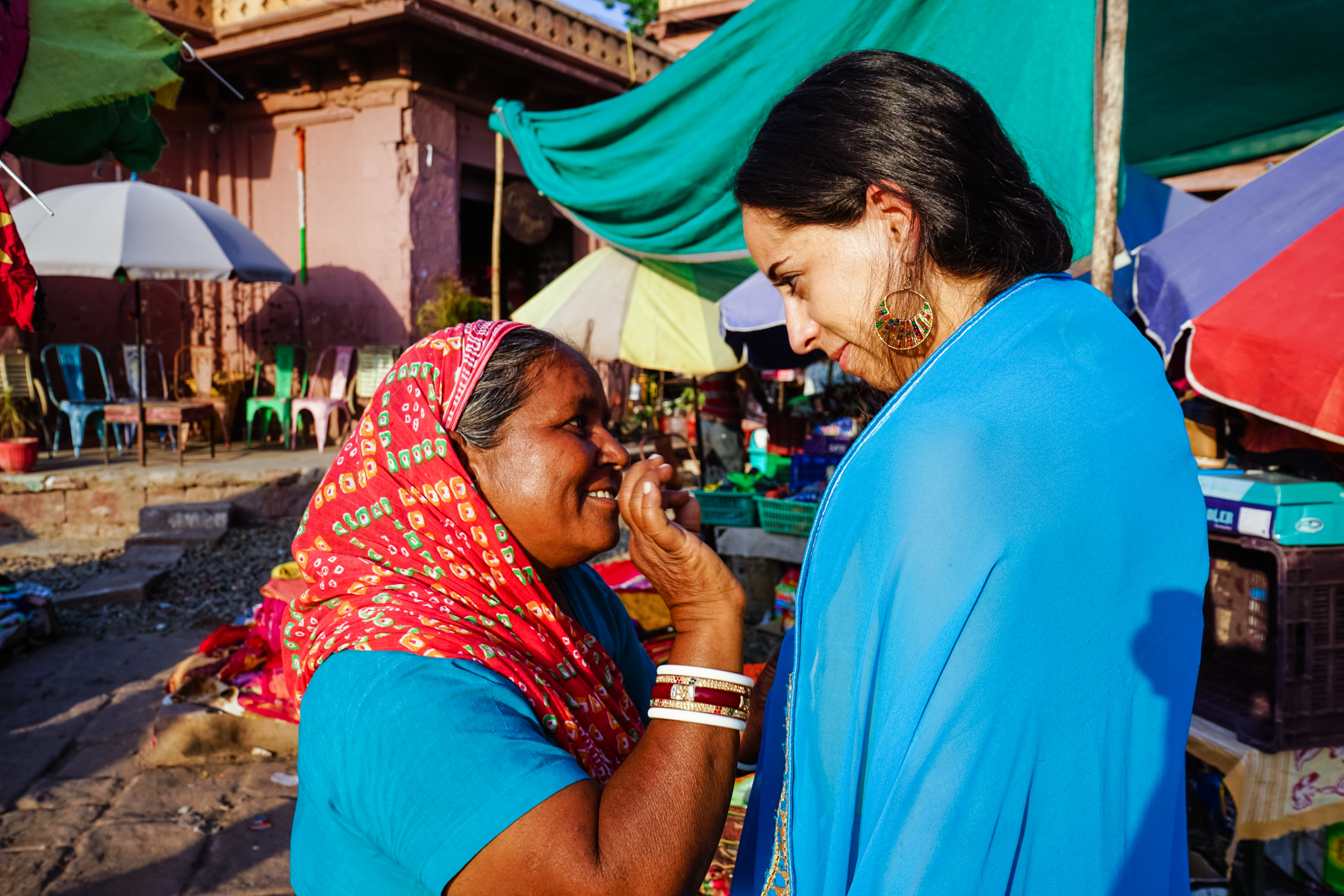
The moment when all the square was looking at us, while she was putting me the Saree
At first, this can be strange, intimidating and even annoying. In India you won’t go unnoticed and if you are blond…forget about it! You will be the star. It is very normal for people to look at you in a penetrating way and analyze every single detail of you, it is something cultural and is not considered rude. People are just as curious about you as you are about them. Sometimes their stare is so penetrating that it can make you feel uncomfortable. What you need to do is simply smile at them and they will greet you in the friendliest way. My advice: just don’t take it personally and ignore it.
3. Get ready to get out of your comfort zone
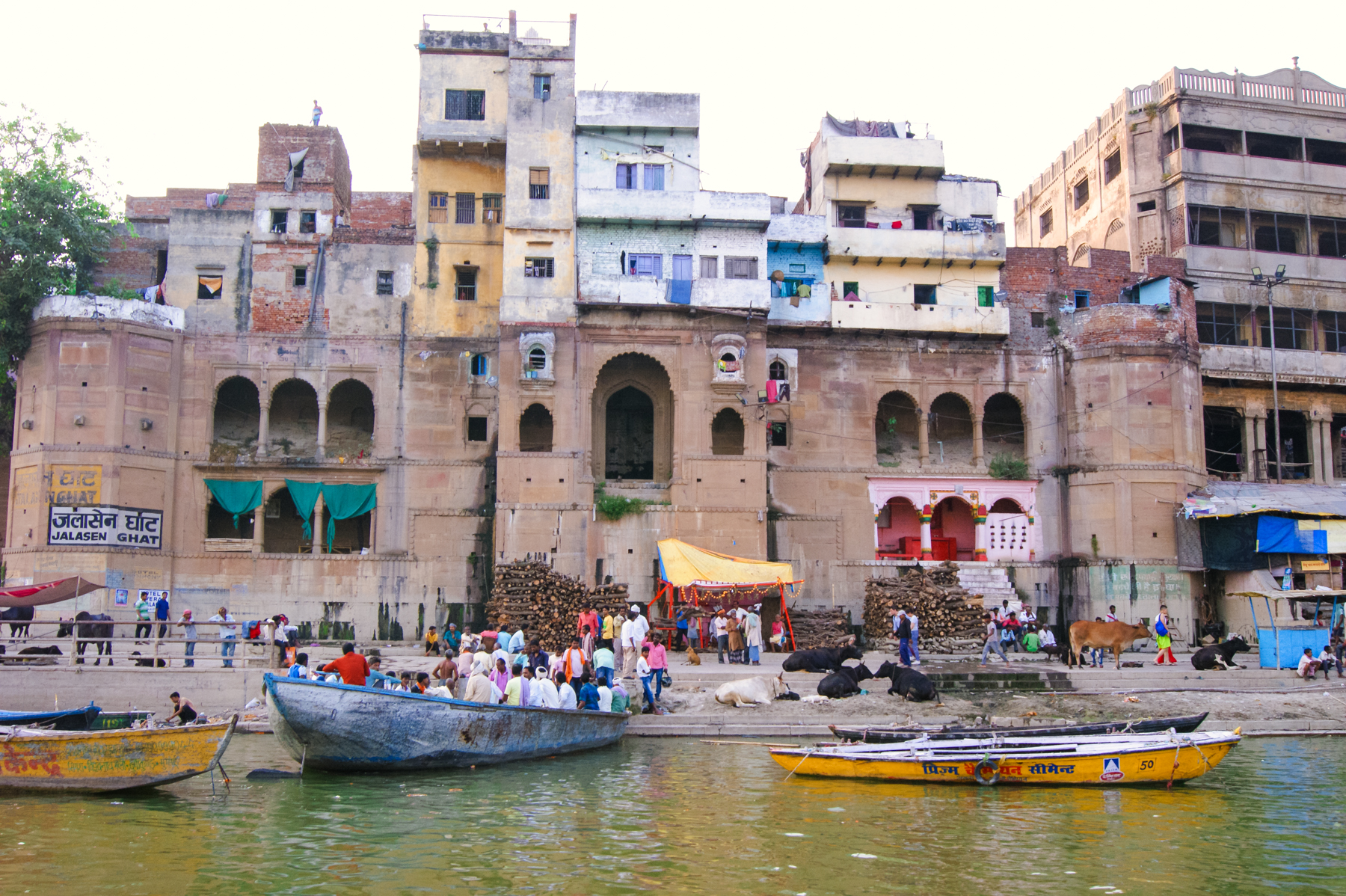
A different view from Ganges River
If there’s one thing I’ve learned from traveling to India, it’s to get out of my comfort zone and solve the problems by yourself. In a way, you become more creative and agiler, it helps you to try to anticipate the problems and find solutions with few resources.
Because it is such a chaotic country, it is normal that many things are not what you expect, or they do not work as you have imagined. A train on time? Forget it! Forget it. Signs in English? In many cities, they do not even exist.
The traffic is chaotic, the rules are mostly non-existent (or at least unconventional) and social behaviors that are normal for you, are totally different there. However, these are the small details that make the travel experience unique and, in some ways, also help you to appreciate what you have at home.
4. Don’t underestimate such a big country
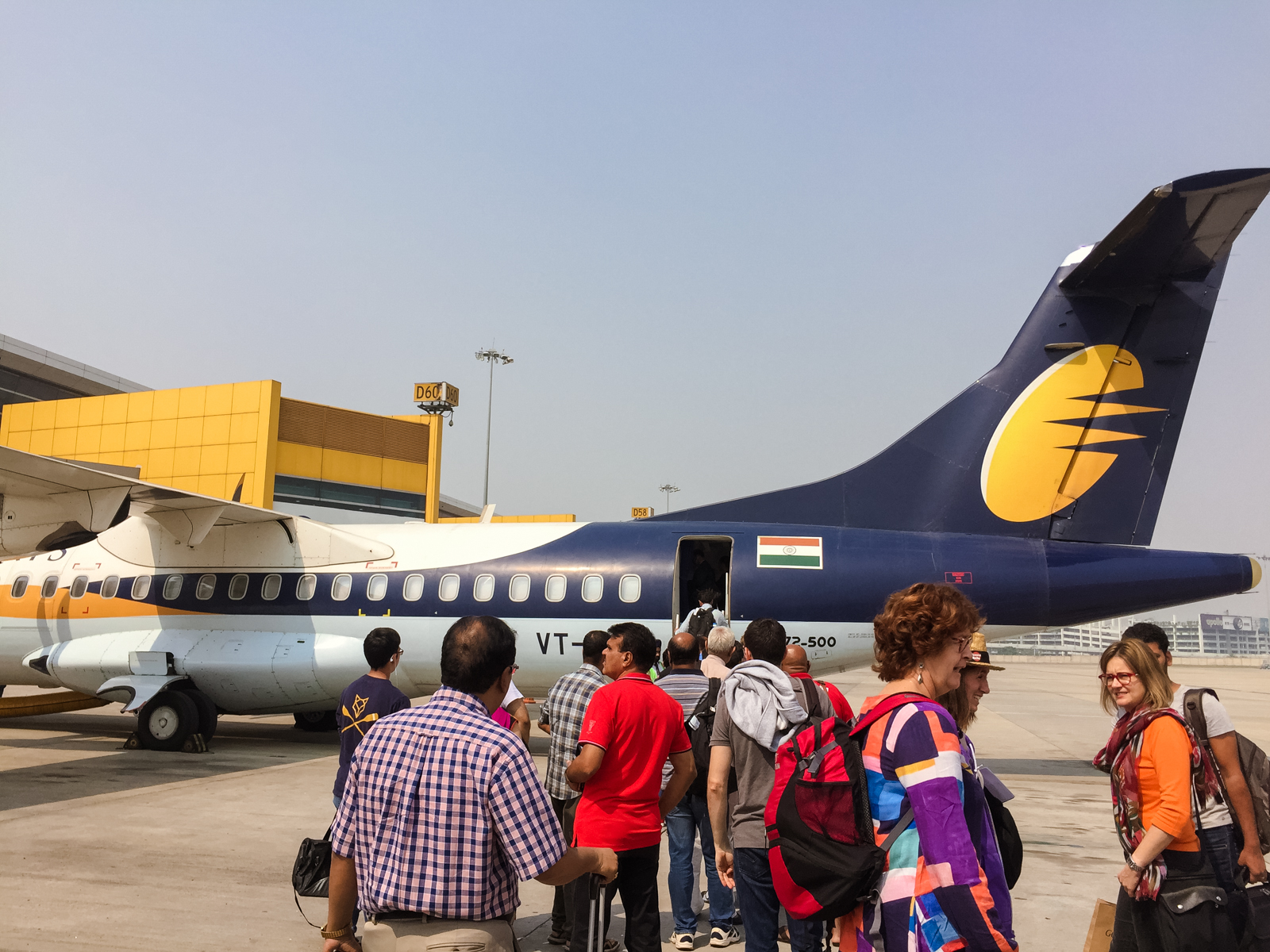
Flying is the fastest way to travel in India
India is huuuge. With an area of 3,287,263 m², it is the seventh largest country in the world. Traveling from one place to another can be challenging, especially as the conditions on some roads are very bad. Moving from one place to another that might not see too far away on the map, could be a 10 or 12-hour trip, so research very well and plan your journeys with enough time. I recommend you to look for Indian airlines as they will save you a lot of time when traveling and are quite cheap. I flew from Varanasi to Delhi with IndiGo and with Jet Airways from Delhi to Jodhpur and both are really good options (don’t expect anything fancy).
5. Plan ahead A/B

The cows just walk around everywhere, including the freeway
Depends on what kind of traveler you are. There are those who like to have everything well planned and there are many others who get carried away and are more spontaneous. Traveling to India spontaneously can be a headache. In any case, it is recommended that you have a plan even if it is generally about how to go from X to Y or what transport possibilities you have. Traffic jams in big cities are a problem and can cause you to spend hours on the bus so plan with enough time to get to your destination. That’s why it is good to have a plan A and a plan B in case something goes wrong.
I recommend that you use a chip to always have internet and Google Maps or download offline apps like CityMaps2Go where you can mark the places of interest beforehand.
6. Cook it, peel it or leave it
This is a saying you must remember. Gastrointestinal diseases are very common in India and since we don’t want you to have problems or that you must lay down in bed the whole trip, prevention is the key. Avoid any raw food such as salads or fruits that you can’t remove the skin from. Bananas are an excellent option to take with you and eat as a snack. You should always drink bottled water and make sure the seal is properly closed and it is more than obvious that you should not drink tap water. Traveling to India and getting sick is the worst thing that can happen to you.
7. Bargain everything
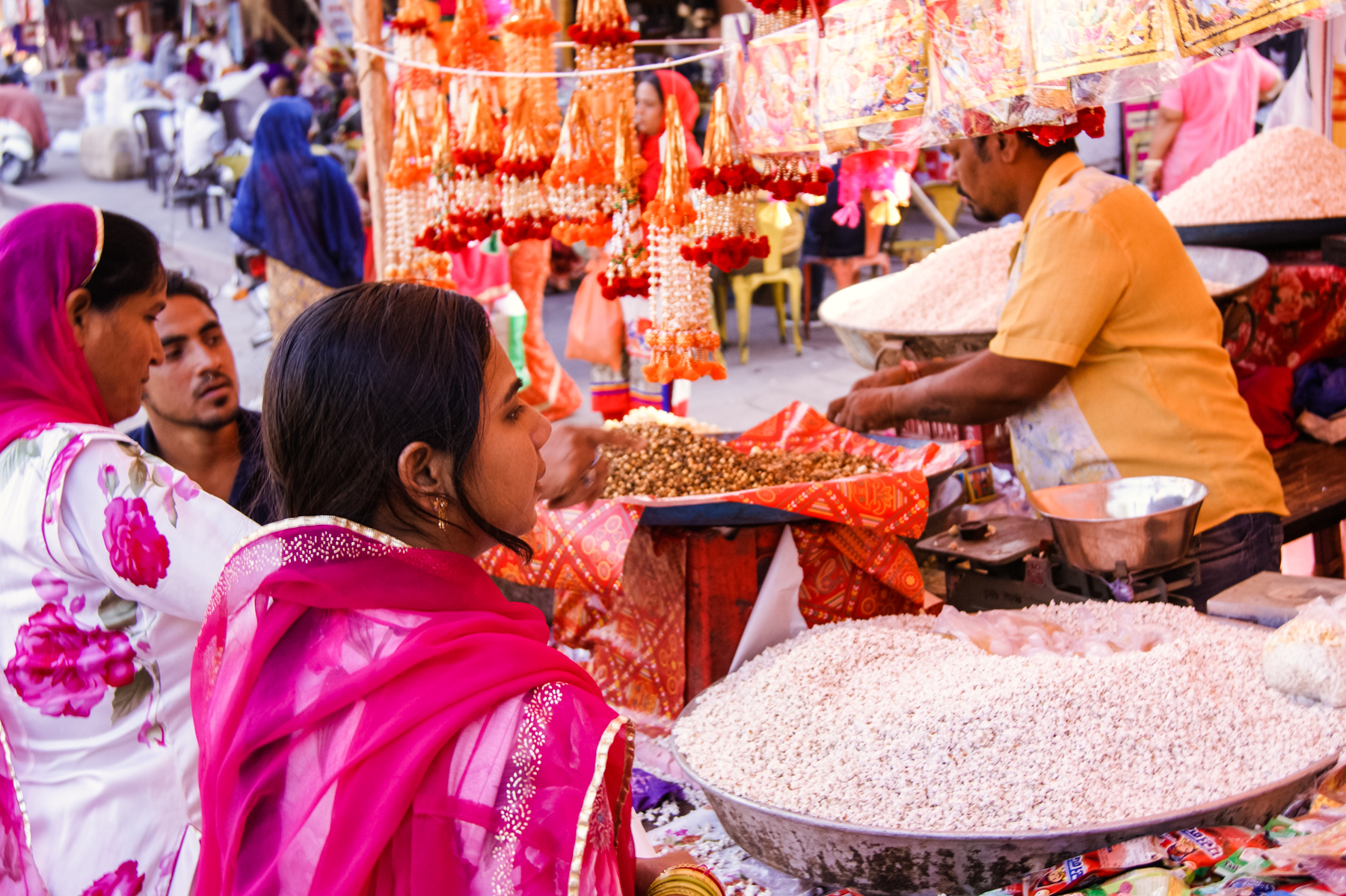
Women buying at a bazaar in Jodhpur
Learn the art of haggling in markets or with public transport such as taxis and tuk-tuks. As in some other parts of the world, in India is very common to negotiate and haggle over prices as the initial price is always quite inflated. Don’t be shy or intimidated, haggle! By the way, I’m terrible at it.
8. Dress up modestly
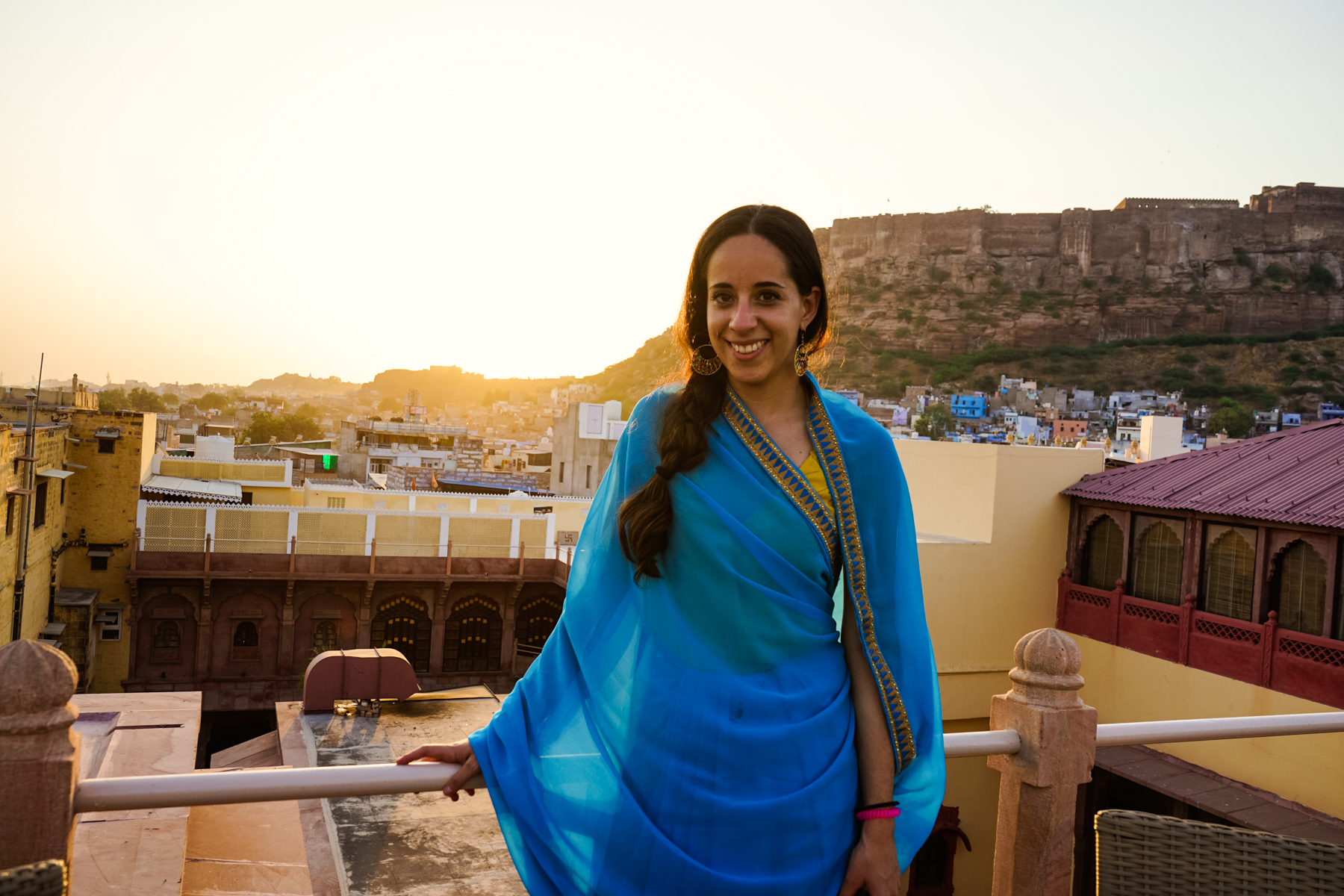
I was so in love with my Saree that I would not like to take it off
India will be growing a lot; however, it remains as a deeply religious and conservative country so you must dress with decorum. This means that as a woman you should cover yourself and not only in religious places like temples and mosques, but always. It is important that you do not wear any clothing that is too tight or where the shoulders or legs are visible. It is always advisable to wear a pashmina that you can put on your head in case you are asked to.
Another important point is the shoes. Avoid flip-flops as many cities are too dirty to wear your shoes open, so unless you want a little stool on your feet, better wear tennis or flats.
Enjoy dressing up in colorful dresses and tunics that you can shop locally to be in tune with the occasion. You will find a variety of clothes that will help you get out of trouble and with which you will be more comfortable and fresh at a good price. Soon I will write more about the dress code in India.
9. Rubbish and social differences
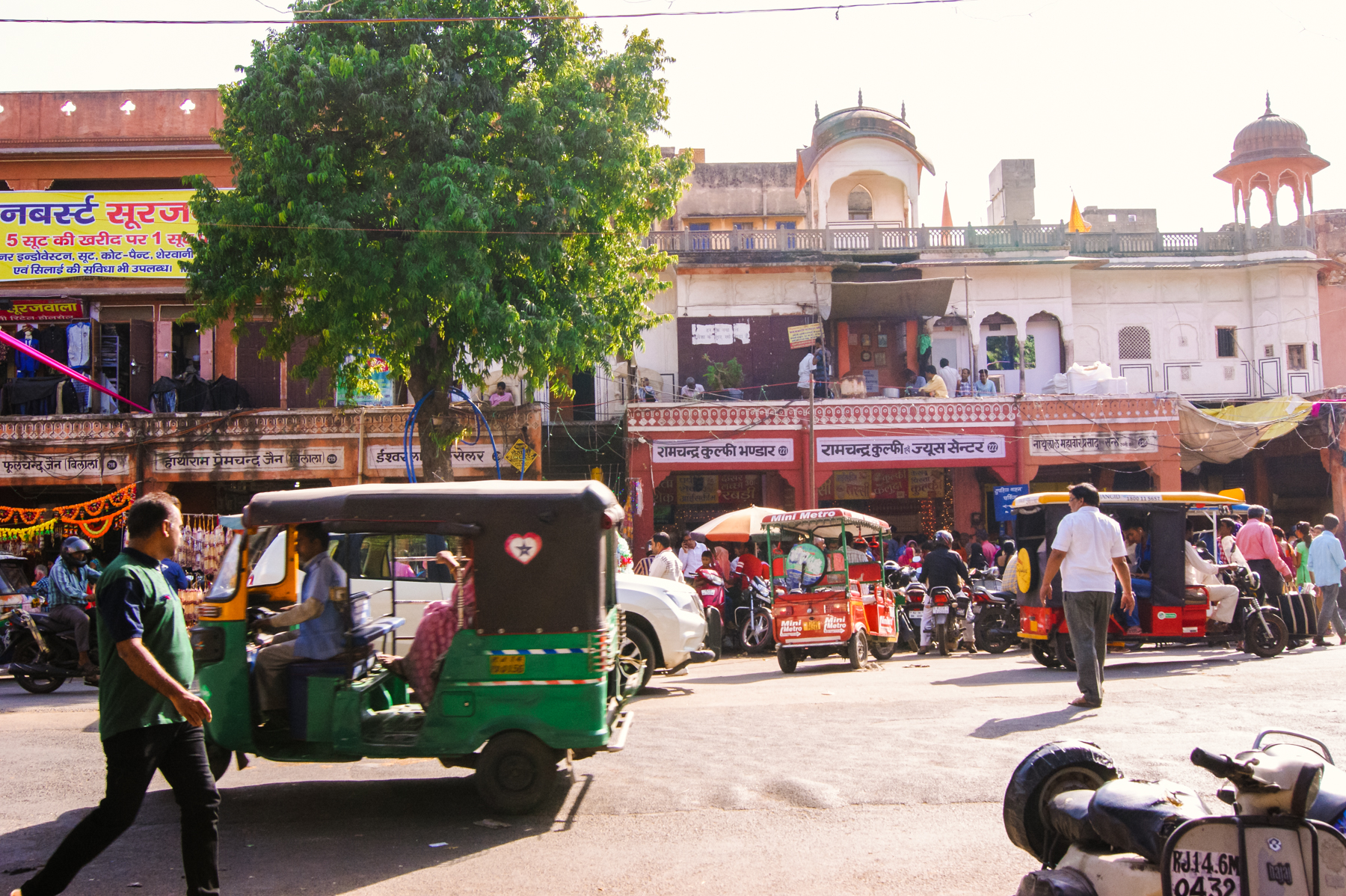
The chaotic streets of Jaipur and its markets
Because of the overcrowding and other problems in India, the poverty rate is quite high, and it is inevitable to see garbage everywhere, people sleeping on the streets and people begging for money on the streets – even children and elderly people. I must confess that from my first impressions in India, seeing people in such poor conditions made a big impact on me, but despite that, it is not advisable under any circumstances to give money because this only reinforces the problem and behind these people, there is an exploitative network.
If you want to help you can donate to international or local institutions. A good example is Salaam Baalak Trust, a non-governmental organization that helps street children with education, culture and medical assistance. They offer city tours on foot with guides who lived on the street as children and now have a new opportunity.
10. Questions, questions and more questions
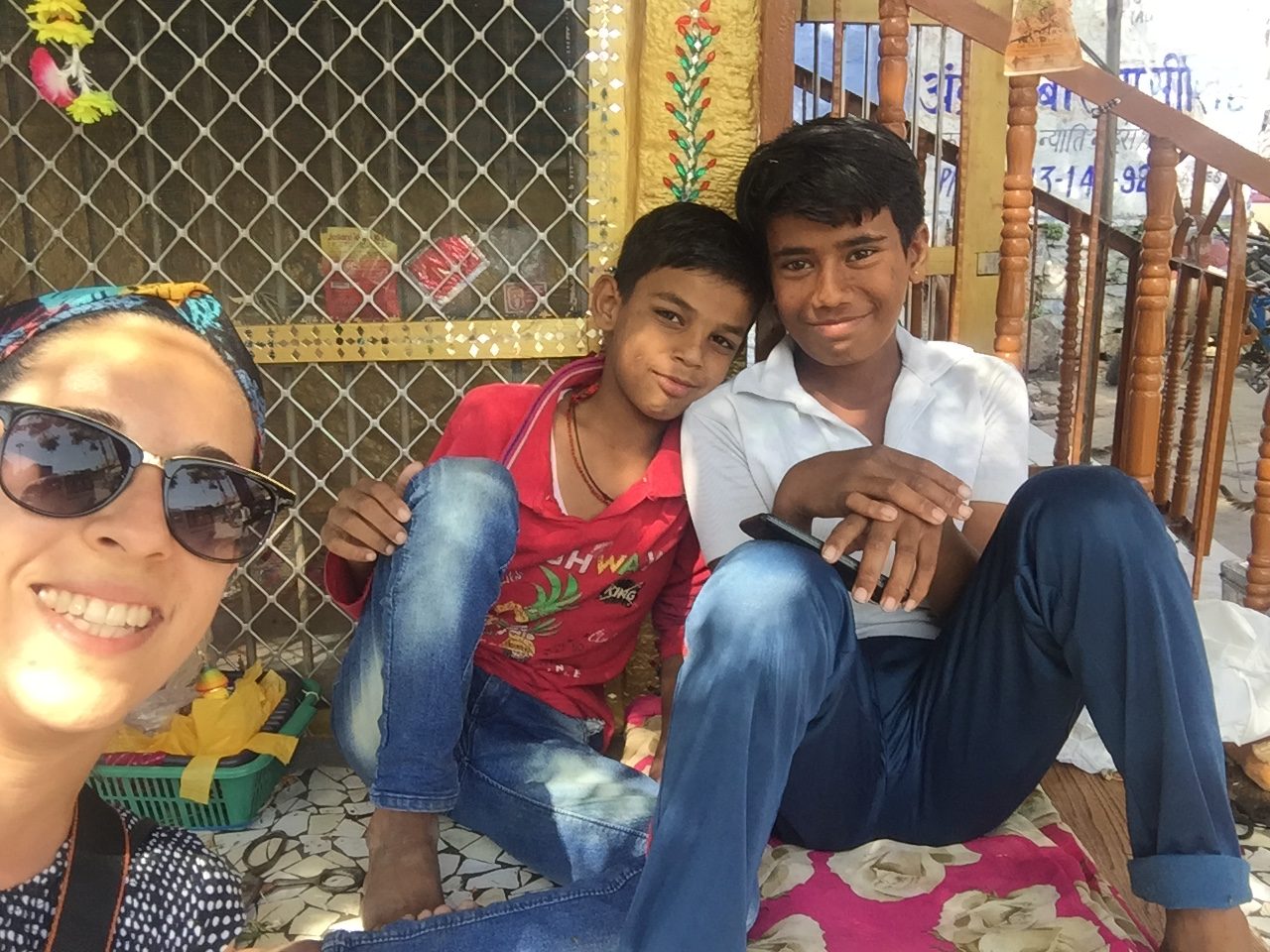
These kids wanted to take a picture with me
Traveling to India and not being asked questions is like not going there. It is VERY common for people to ask you thousands of personal questions. We were asked about things like where we worked or how much money we made back in our countries….each journey in tuk-tuk felt like a police interrogation and believe me, this is normal and at first, it is very strange and leaves you feeling insecure. Don’t be afraid to ask the same questions too, they will be happy to tell you (and even show you pictures) of their lives.
11. Interact with the locals
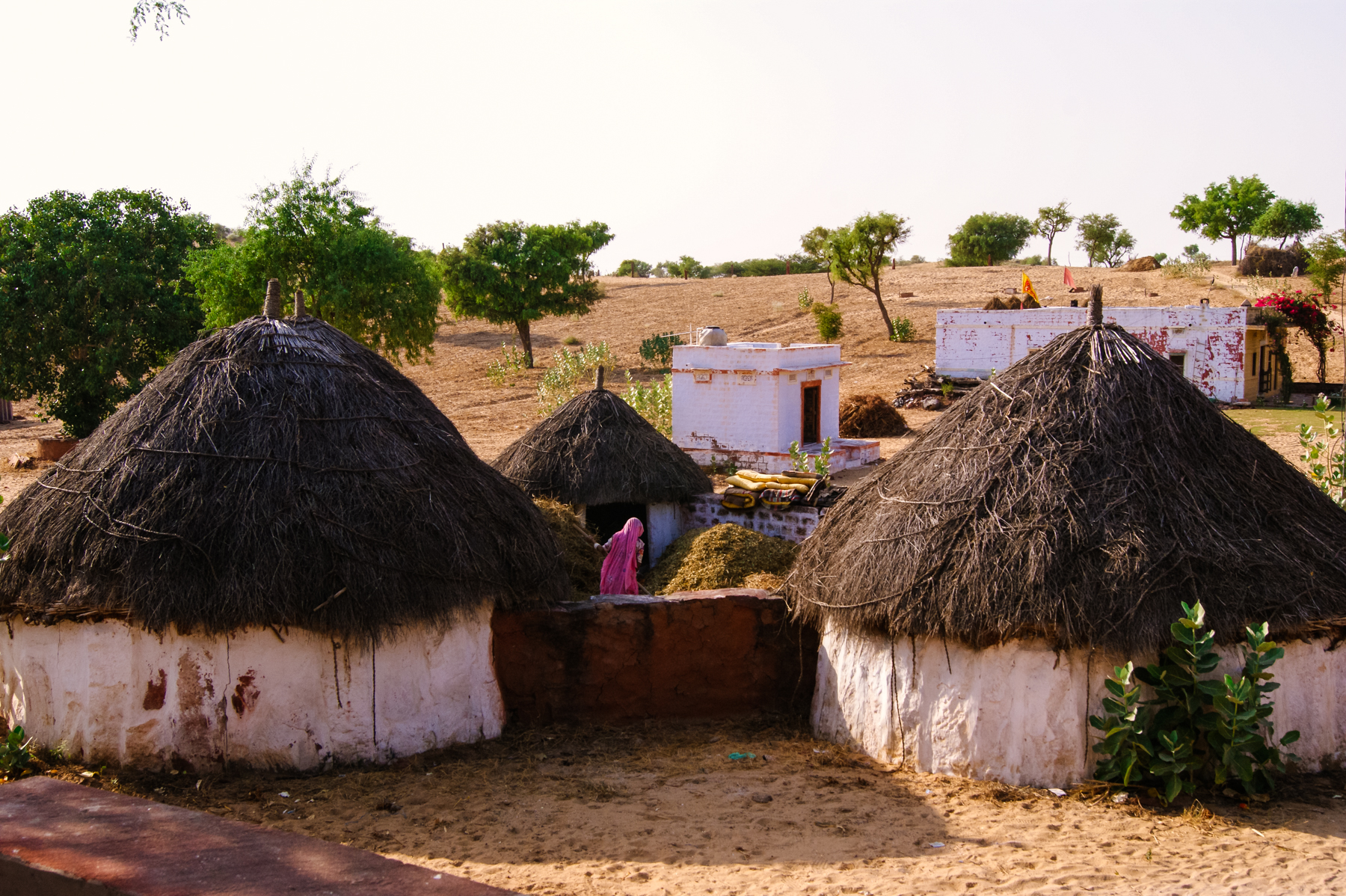
I went to the house of an Indian family in the middle of the desert
Part of the magic of traveling is interacting with locals and getting to know life outside of the typical tourist sites. It is in these moments when you really know the country, its people, and idiosyncrasies and most of the times is when you live the best travel experiences.
Maybe this is one of the most valuable points, in my opinion, because as I mentioned in point number 10, maybe at the beginning with so many questions it is normal to be closed and discreet, but after a few days you learn to open up and ask questions back and this makes you learn a lot about their culture and their daily life.
We ate with a family in the desert and got to know how they live and what they eat. In addition, we ride their camels. To me, this is worth more than anything I could have bought.
12. Don’t rely too much on the kindness
Yes, it’s true that everyone is curious to hear from you, but as everywhere in the world, there are people who will want to take advantage of you and your poor tourist orientation. This is where you must listen to your sixth sense….at the end of the day, who comes out of nowhere and tries to help you in exchange for nothing? This happens especially near train stations or airports where they know there are confused tourists.
13. There is security everywhere
One of the things that impressed me was that in almost every place like hotels, some restaurants, and even markets; they have metal detectors or X-ray scanners at the entrance. This is normal as a security measure because this country has unfortunately suffered from terrorism.
14. Traveling in India is a high-risk sport….
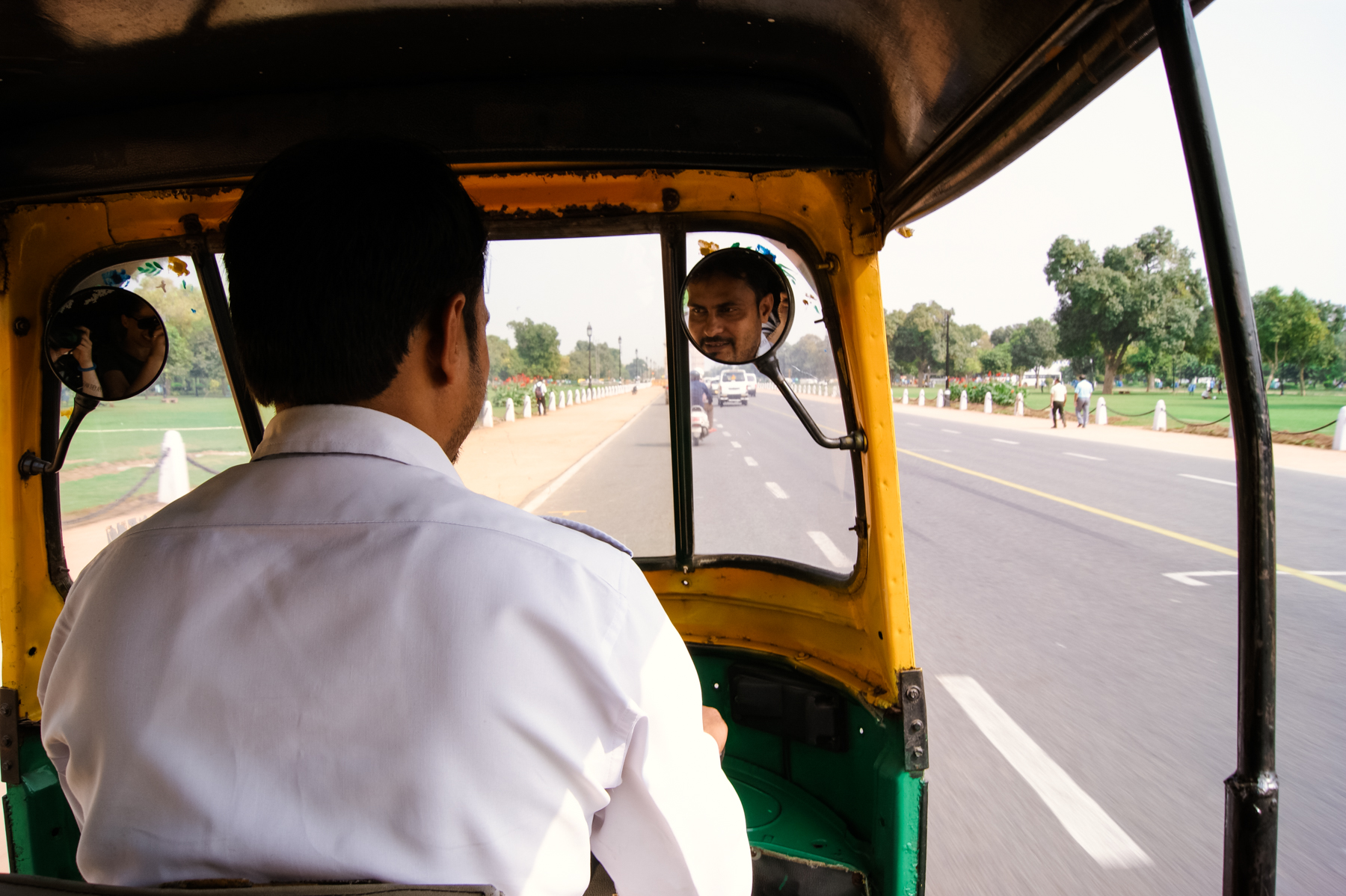
Traveling by tuk-tuk is also really fast and comfortable
…and driving an art. In less than a second from the accelerator to the brake. I think it’s total chaos in perfect order and yes, transportation is as crazy and chaotic as everyone says it is. Each street can be crowded with taxis, tuk-tuks, trucks, cows, and rickshaws all at the same time and without any order and like pieces of tetrix, they move forward little by little without leaving space between them, until somehow everything flows. Of course, a lot of honking is involved.
15. Pollution
When I saw the grayish layer I thought it was foggy, but after a few days, I realized it was actually pollution. Luckily when I was there the smog was not so dense. Sometimes it is such a dense layer that it is impossible to see a few meters away and you must wear an anti-dust face mouth mask. There are times when pollution is so bad, that breathing is equivalent to smoking 45 cigarettes a day. Regardless of the time of year you travel, I recommend that you bring an anti-dust face mouth mask in case there is a sudden case of contamination.

Impressive views of the Jodphur Fort
Traveling to India has been one of the most overwhelming and overwhelming experiences, but it was an experience that I would not change for anything in the world and that left me with many incredible experiences.
I also think that if I had been more prepared and had these tips for traveling to India, I would have been more aware, perhaps I would have enjoyed my stay even more. At the end of my trip, tired and with a stomach-ache, I urged myself to return home. After a couple of weeks and after realizing all that I lived, I couldn’t wait to go back.


 Hello! It's me! I am a dog lover Mexican girl living in Europe. This is my blog, where I share a little piece of me and my life. So if you are interested in traveling, food and responsible consumption...welcome!
Hello! It's me! I am a dog lover Mexican girl living in Europe. This is my blog, where I share a little piece of me and my life. So if you are interested in traveling, food and responsible consumption...welcome!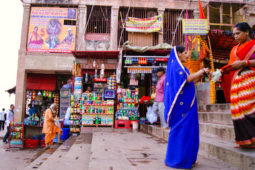




hello hello!